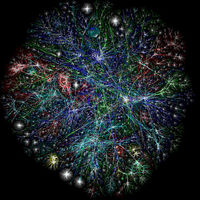Paper Types
A visualization paper typically falls into one of five categories: technique, system, application, evaluation, or theory. Some overlap does exist in practice between these categories.
In an ideal intellectual model, visualization proceeds from a theory to a technique, then an application, a system, then an evaluation of a system, but good techniques often derive from applications and cause development of new theories. Equally, evaluation can generate questions that lead to a new theory, technique, system and/or application.
Part of the peer review process thus involves reviewers judging where a paper fits best into the larger intellectual landscape, and a paper that fits multiple categories is often superior to a narrower paper that fits only a single category. Authors are therefore requested to choose what they think is the primary category of their submission, but a submission may be reclassified during the review process.
The paper types considered for EuroVis are the following:
- A technique paper describes a new or significantly improved algorithm or technique in sufficient detail so that other researchers can reproduce the results. This technique should ideally be of general application rather than being restricted to a single task or single source of data, and the exposition should be focused on what the technique does, how it does it, when to use it, and what the computational and other costs are.
- A system paper describes a solution to a problem where the major task is building a large complex software artifact, applying largely known visualization techniques. Here, the focus should be on the design decisions, the implications for software / hardware structure, and comparison with other systems.
- An application paper normally starts with an encapsulated description of a problem domain and the questions to be resolved by visualization, then describes the application of visualization to the task, any novel techniques developed, and how the visualization solution answered the questions posed. Techniques related to a single problem are normally application papers, and evaluation is often limited because many application papers are essentially custom software for a specific problem.
- An evaluation paper is usually an empirical assessment of how effective a technique or system is when used by humans. As such, these often involve rigorous experimental protocols and statistical analysis, but this is not the only possible form of evaluation. Good evaluation papers go beyond statistical analysis to explain causes, construct models and predict effectiveness of related systems.
- A theory paper describes aspects of the process by which humans construct visualizations to explore data or communicate with other humans. These papers do not usually involve implementation, but contribute by illuminating the role of visualization in data analysis and often by proposing models for improving visualization as a discipline.

